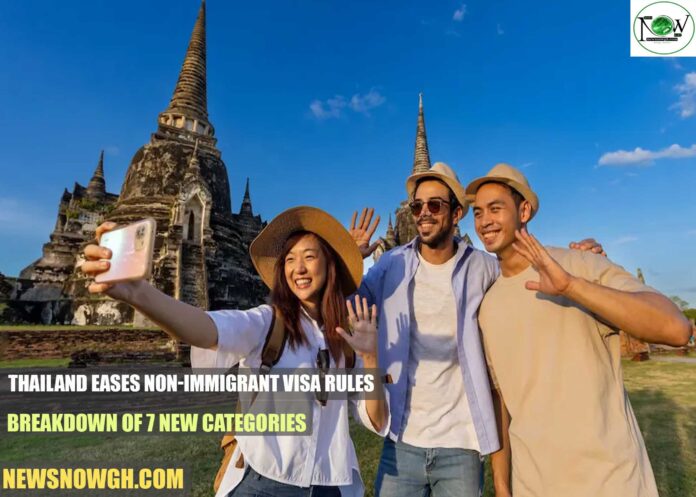Thailand Eases Non-Immigrant Visa Rules: Breakdown of 7 New Categories
Thailand has revamped its Non-Immigrant visa system, reducing the number of categories from 17 to 7 starting August 31, 2025. This change streamlines the application process by merging similar categories while maintaining existing eligibility and rights. Travelers and expatriates should familiarize themselves with these new categories before applying.
Introduction to the Visa Restructuring
Thailand is making significant changes to its non-immigrant visa framework. The government aims to simplify and clarify the application process, benefiting both applicants and officials. This restructure will eliminate confusion and make it easier for everyone involved.
Reasons for the Change
Historically, the numerous categories of Thai non-immigrant visas often bewildered applicants and even embassy staff. The Ministry of Foreign Affairs seeks to address this issue by consolidating overlapping categories into broader groups. This reform will help travelers, workers, students, and businesses clearly understand the visas they need.
Importantly, this change focuses on procedures rather than regulations. Eligibility requirements and rights for applicants will remain unchanged. Essentially, while the names of the visa categories will differ, the rules governing who can apply will not.
What Remains Unchanged
If you currently hold a Non-Immigrant visa, your rights and eligibility are unaffected. The reform is purely about classification and not about tightening access. The same rules apply, but with a clearer naming system for visa categories.
Overview of the New Visa Categories
Here’s a concise overview of the newly structured categories for non-immigrant visas:
- F (Official): This visa is designated for diplomats, government officials, and individuals working with international organizations. It facilitates official duties based on government agreements.
- B (Business): This category encompasses various work and business activities, including employment, investment, and trade. It merges several older categories such as B, B-A, IM, IB, and EX.
- ED (Education): Intended for students, teachers, and researchers, this category combines several educational visas into one streamlined option.
- M (Mass Media): This visa is for journalists, reporters, and media professionals working in Thailand. It ensures that media personnel receive proper accreditation for their work.
- O (Others): This broad category includes family reunifications, dependents, retirees, and long-stay visas, merging O, O-A (retirement), and O-X (10-year stay) visas.
- L-A (Labour): Issued to foreign workers with employment in Thailand, this visa focuses on labor activities and may require additional permits.
- O L-A: This special combined category applies to cases that overlap family or dependent purposes with labor needs, providing flexibility in unique situations.
Implications for Travelers and Expats
For most applicants, the practical experience of applying for a visa will remain largely unchanged. You will still need to meet the same requirements and submit the same documents. The main difference lies in the clearer labeling and categorization of visa types.
Applicants must identify the new category that aligns with their purpose of stay. For example, what was previously ED-A now falls under the ED category, and business visas are consolidated under B.
Conclusion
Thailand’s visa reform focuses on simplifying a complex system rather than restricting access. By narrowing down to seven categories, the government aims to reduce confusion and improve processing times. This change promises a more efficient experience for travelers and expatriates navigating Thailand’s visa landscape.
Follow NewsNowGh to stay updated on the latest information regarding work permits, visas, and visa-sponsored employment.


